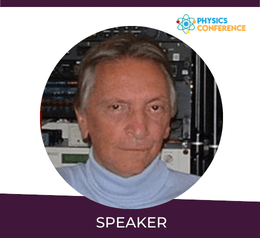Scholars International Conference on
PHYSICS AND QUANTUM PHYSICS
THEME: "Frontiers in Physics and Quantum Physics"
 22-23 Jun 2022
22-23 Jun 2022  NH Potsdam, Berlin, Germany & Online
NH Potsdam, Berlin, Germany & Online THEME: "Frontiers in Physics and Quantum Physics"
 22-23 Jun 2022
22-23 Jun 2022  NH Potsdam, Berlin, Germany & Online
NH Potsdam, Berlin, Germany & Online 
Uni Basel, Germany
Title: Are we wrong about the Michelson Morley experiment?
Hans Deyssenroth studied electrical engineering at the TH Karlsruhe in Germany and physics with a Diploma degree at the University of Basel in Switzerland. He worked as an IT manager and biometrician in the Pharma industry in Switzerland and was the co-author of about 20 publications. After retirement he studied again the basics of physics and got increasing doubts that the existing models are correct, though they have been verified by many and manyfold experiments. Now he is proposing new experiments that could confirm these doubts and is thinking about alternative models that can explain the observed facts better.
The answer could be yes, because of a small detail that has been overlooked for decades and that was not known in 1905. Lorentz, Poincaré and Einstein assumed that photons behave like tennis balls shot onto a moving 45° board and get a lateral moment in the direction of motion along the x-axis. Therefore, the light beam in the Michelson Morley experiment (MME) from the half transparent mirror to the upper mirror in the y-axis is oblique (observed from a rest frame). But R. Feynman concluded that a mirror is a light source where new photons are emitted, and together with the second postulate of the STR this light beam should therefore be perpendicular to the direction of motion and parallel to the y-axis.
In this case there is no time dilation due to Pythagoras and the postulated length contraction would destroy the null result of the MME. Therefore, the application of the Lorentz transformation would be wrong, and the observed relativistic effects must have another cause, e.g. by an interaction with the non-empty space. A time dilation without a length contraction would have great impacts to the Theories of Relativity, though there are overwhelming confirmations by complex experiments, because the physical basis to the mathematical space-time modelling by the Lorentz transformation would be wrong.
Several experiments with the newest technology are proposed to test this alternative view on the fundamental MM-experiment.